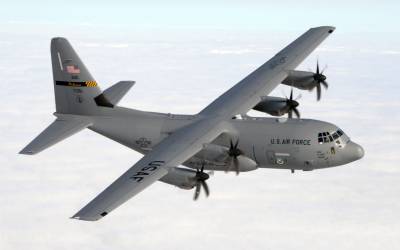Javelin, firing (click to view full) The FGM-148 Javelin missile system aimed to solve 2 key problems experienced by American forces. One was a series of disastrous experiences in Vietnam, trying to use 66mm M72 LAW rockets against old Soviet tanks. A number of...
Events Articles
Armasuisse Started Tiger Delivery To US | Kongsberg NASAMS Delivery Times To Be Improved | Belgium Approved More Military Aid For Ukraine
Americas The Swiss Federal Office for Armaments (armasuisse) has started delivery of 22 decommissioned F-5E/F Tiger II fighter jets to the United States. The first aircraft was picked up by the United States Marine Corps (USMC) on March 18 from Emmen Air Force Station...
The C-130J: New Hercules & Old Bottlenecks
RAAF C-130J-30, flares (click to view full) The C-130 Hercules remains one of the longest-running aerospace manufacturing programs of all time. Since 1956, over 40 models and variants have served as the tactical airlift backbone for over 50 nations. The C-130J looks...
US Space Force Awarded Boeing For WGS Constellation | Niger Breaks Off Military Cooperation With US | Japan Approves approves Export of F-X Jet
Americas Lockheed Martin won a $21 million modification, which exercises an option to provide maintenance and sustainment operations of the Australia, Canada and United Kingdom Reprogramming Laboratory facilities and systems for the F-35 A/B aircraft program. Work...
The New Chinooks: Boeing’s Modern H-47 Heavy-Lift Helicopters
CH-47Fs take off (click to view full) DII FOCUS articles offer in-depth, updated looks at significant military programs of record; this FOCUS Article covers the CH-47F/MH-47G Chinook helicopter programs, in the USA and abroad. These helicopters' distinctive "flying...
Embraer & ST Engineering Explore JVs Across Asia And South America | Naval Group Co-Develops NCMS For UAE | HII Delivers REMUS 620 To Indo-Pacific
Americas Lt. Col. Joel “Thermo” Thesing, an F-15C instructor pilot from the 123rd Fighter Squadron of the Oregon Air National Guard’s 142nd Wing, became the unit’s first aviator to take the controls of the highly anticipated F-15EX fighter jet. This inaugural flight...
US Might Adopt Korean Bigung System | Fincantieri To Support Military Training Of Qatar Navy | German Military “Aging” and “Shrinking”
Americas LIG Nex 1, a South Korean defense contractor, is ramping up efforts to secure a historic arms deal with the United States. The company aims to finalize an export contract for its Bigung 2.75-inch (70mm) infrared-guided anti-ship missile system. This potential...
NG Tapped For Triton Systems | Safran To Support Qatar’s Rafales | Taiwan Acquires Additional SkyGuardians
Americas Northrop Grumman Systems won a $19 million modification, which provides logistics and test support for mission control and operator training systems as well as associated engineering and field service representative technical support to sustain MQ-4C Triton...
The MQ-4C Triton: Poseidon’s Unmanned Herald
BAMS Operation Concept (click to view full) The world's P-3 Orion fleets have served for a long time, and many are reaching the end of their lifespans. In the USA, and possibly beyond, the new P-8 Poseidon Multi-mission Maritime Aircraft will take up the P-3's role....






